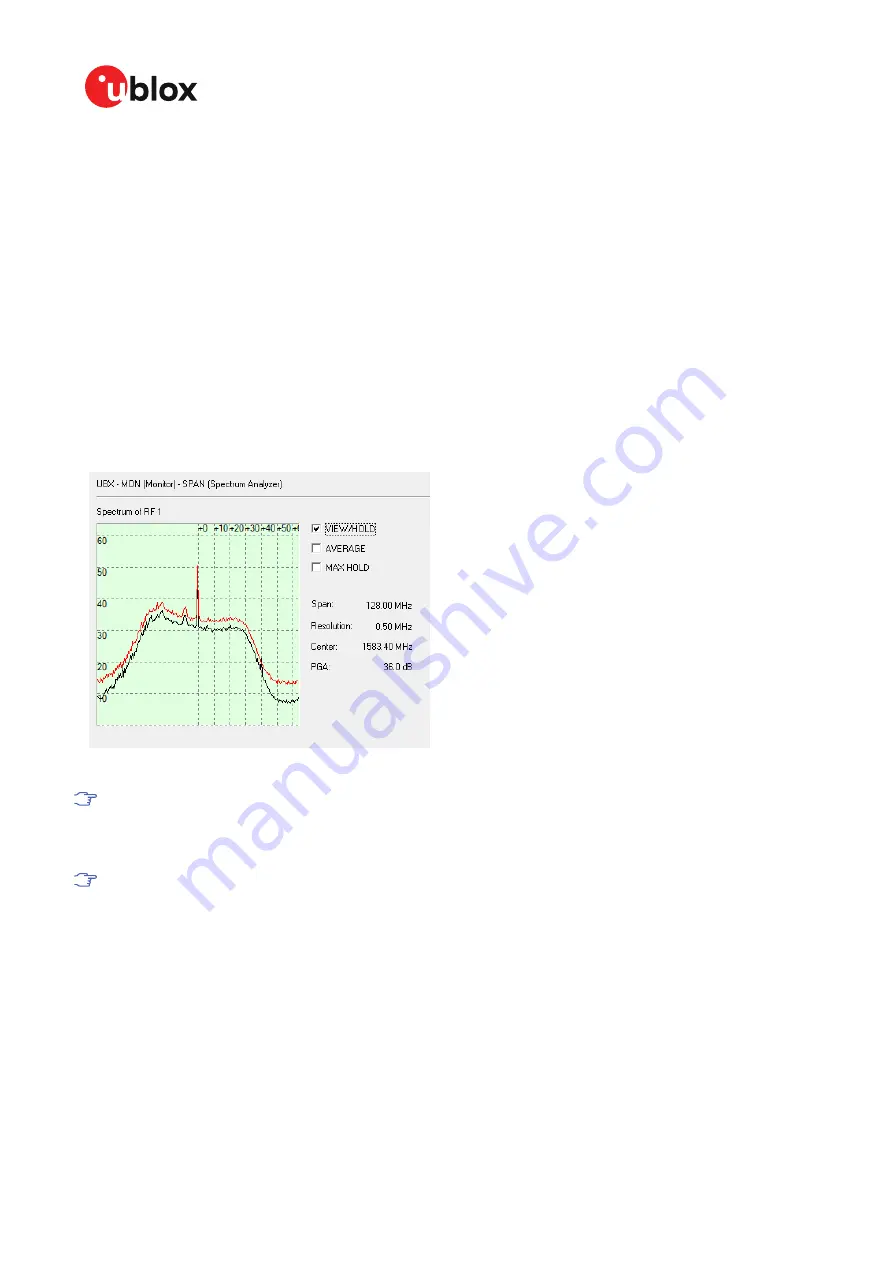
NEO-M9N - Integration manual
The vertical discontinuous lines in the chart area represent the offset to the center frequency in
MHz. This helps to estimate the frequency of any spurious emission seen.
In addition, u-center includes three functions commonly found in any spectrum analyzer. These
features support the RF front-end design and help to identify any jammer presence during the
application operation.
• View / hold: if selected, the current spectrum shape freezes in a colored line. This allows for a
comparison between the time the spectrum was frozen and the real-time spectrum. This is
particularly helpful in assessing the impact of running other onboard components.
• Average: if selected, a colored line shows the averaged spectrum for each frequency. This is
useful for analysis over time and to obtain a less noisy shape.
• Max hold: if selected, a colored line shows the maximum amplitude measured at each
frequency. This option helps to identify any jammer over a period of time.
shows the spectrum view in u-center with the view/hold option selected. The redish line
represents the frozen spectrum before modifying the external gain, while the black line represents
the current measurement.
Figure 9: Spectrum analyzer view in u-center with the option view/hold selected
By changing the number of constellations enabled, the span widens or narrows. This has a
direct impact on the spectrum resolution, as the number of frequencies measured is fixed
at 256. For further details about this message and how to calculate each frequency, see the
interface description [
A big spur may be visible in the center frequency. The signal comes internally from the
receiver and it does not cause any degradation in the performance.
3.7 Communication interfaces
u-blox receivers are equipped with a communication interface which is multi-protocol capable. The
interface ports can be used to transmit GNSS measurements, monitor status information and
configure the receiver.
A protocol (e.g. UBX, NMEA) can be assigned to several ports simultaneously, each configured with
individual settings (e.g. baud rate, message rates, etc.). More than one protocol (e.g. UBX protocol
and NMEA) can be assigned to a single port (multi-protocol capability), which is particularly useful
for debugging purposes.
UBX-19014286 - R07
3 Receiver functionality
Page 24 of 95
C1-Public






























